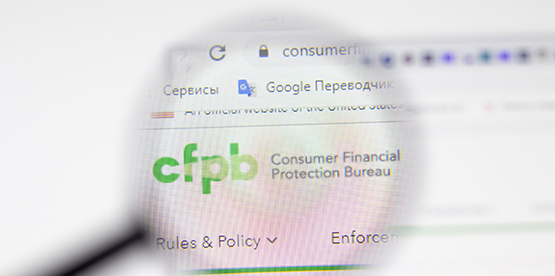In a June 28 letter to Director Chopra and accompanying White Paper and press release, the ABA, CBA, ICBA, and the U.S. Chamber of Commerce have called on the Consumer Financial Protection Bureau (CFPB or Bureau) to rescind recent revisions made to its UDAAP examination manual that had effectuated the CFPB’s controversial theory that alleged discriminatory conduct occurring outside the offering or provision of credit could be addressed using “unfairness” authority. The White Paper characterized the primary legal flaws in the CFPB’s action as follows:
- The CFPB’s conflation of unfairness and discrimination ignores the text, structure, and legislative history of the Dodd-Frank Act. For example, the Dodd-Frank Act discusses “unfairness” and “discrimination” as two separate concepts and defines “unfairness” without mentioning discrimination. The Act’s legislative history refers to the Bureau’s antidiscrimination authority in the context of ECOA and HMDA, while referring to the Bureau’s UDAAP authority separately.
- The CFPB’s view of “unfairness” is inconsistent with decades of understanding and usage of that term in the Federal Trade Commission Act and with the enactment of ECOA. Congress gave the CFPB the same “unfairness” authority that it gave to the Federal Trade Commission in 1938, which has never included discrimination. It makes no sense that Congress would have enacted ECOA in 1974 to address discrimination in credit transactions if it had already prohibited discrimination through the FTC’s unfairness authority. For the same reason, Congress could not have intended in 1938 for unfairness to “fill gaps” in civil rights laws that did not exist.
- The CFPB’s view is contrary to Supreme Court precedent regarding disparate impact liability. The CFPB’s actions and statements indicate it conflates unfairness with disparate impact, or unintentional discrimination. The Supreme Court has recognized disparate impact as a theory of liability only when Congress uses certain “results-oriented” language in antidiscrimination laws, e.g., the Fair Housing Act. The Dodd Frank Act neither contains the requisite language, nor is it an antidiscrimination law.
- The CFPB’s action is subject to review by courts because it constitutes final agency action – a legislative rule – that is invalid, both substantively and procedurally. The CFPB’s action carries the force and effect of law and imposes new substantive duties on supervised institutions. However, the Bureau did not follow Administrative Procedure Act requirements for notice-and-comment rulemaking. Additionally, the CFPB’s interpretation is not in accordance with law and exceeds the CFPB’s statutory authority. The CFPB’s action should be held unlawful and set aside.
- The CFPB’s action is subject to Congressional disapproval under the Congressional Review Act. A Member of Congress can request a GAO opinion on whether the CFPB’s actions are a rule, which can ultimately trigger Congressional review using the procedures established in the Congressional Review Act.
The White Paper concludes:
“Such sweeping changes that alter the legal duties of so many are the proper province of Congress, not of independent regulatory agencies, and the CFPB cannot ignore the requirements of the Administrative Procedures Act and Congressional Review Act. The CFPB may well wish to ‘fill gaps’ it perceives in federal antidiscrimination law. But Congress has simply not authorized the CFPB to fill those gaps. If the CFPB believes it requires additional authority to address alleged discriminatory conduct, it must obtain that authority from Congress, not take the law into its own hands. The associations and our members stand ready to work with Congress and the CFPB to ensure the just administration of the law.”
Take-away:
The position taken in the White Paper that the CFPB’s actions were contrary to law may be an indication that the trade groups intend to mount an APA legal challenge. Alternatively, the arguments made could in theory form a defense to any CFPB supervisory or enforcement action premised upon its new “discrimination-unfairness” theory. Financial institutions subject to CFPB examination would be well-advised to consider the arguments raised by the groups.

